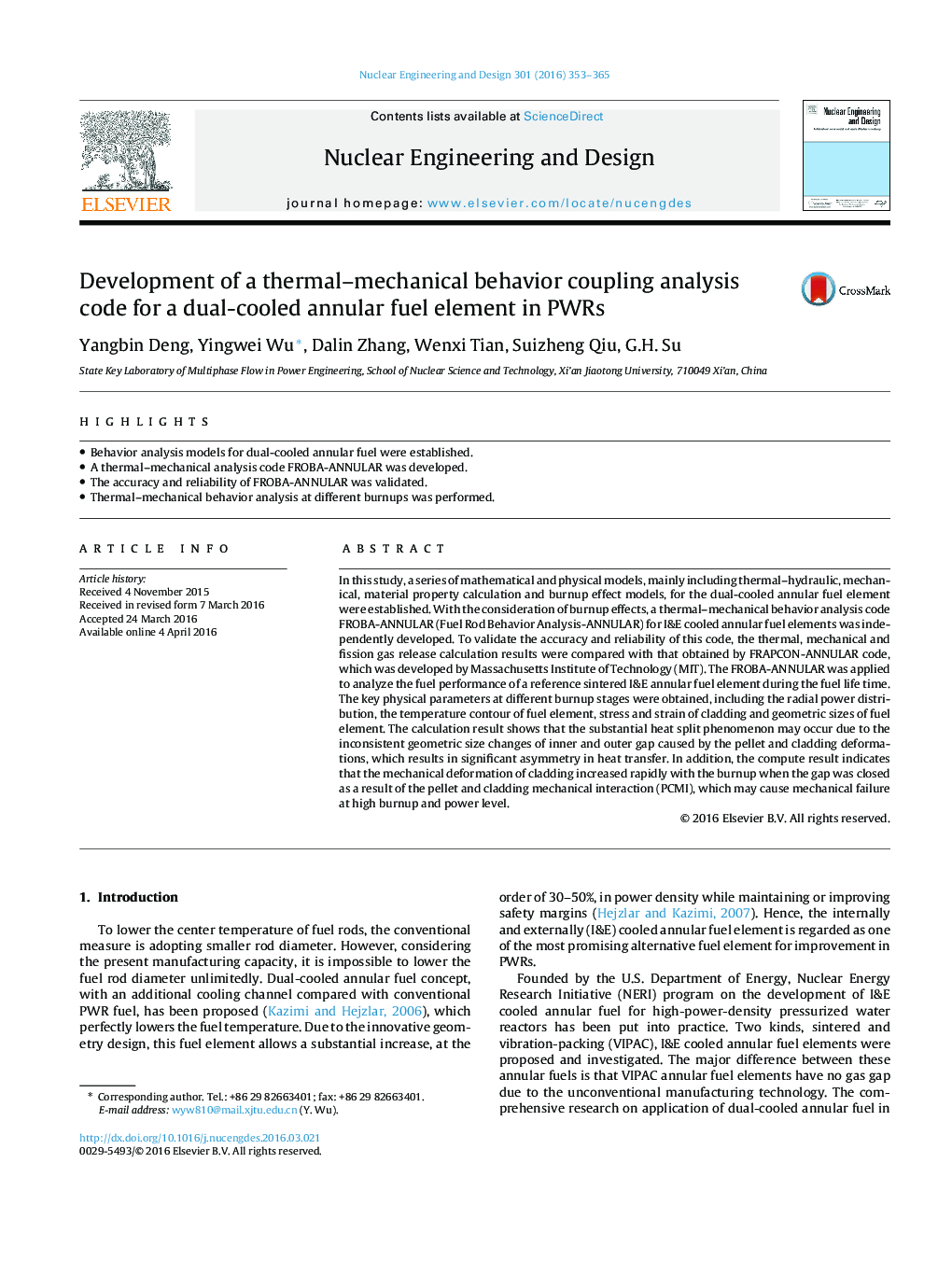| Article ID | Journal | Published Year | Pages | File Type |
|---|---|---|---|---|
| 295951 | Nuclear Engineering and Design | 2016 | 13 Pages |
•Behavior analysis models for dual-cooled annular fuel were established.•A thermal–mechanical analysis code FROBA-ANNULAR was developed.•The accuracy and reliability of FROBA-ANNULAR was validated.•Thermal–mechanical behavior analysis at different burnups was performed.
In this study, a series of mathematical and physical models, mainly including thermal–hydraulic, mechanical, material property calculation and burnup effect models, for the dual-cooled annular fuel element were established. With the consideration of burnup effects, a thermal–mechanical behavior analysis code FROBA-ANNULAR (Fuel Rod Behavior Analysis-ANNULAR) for I&E cooled annular fuel elements was independently developed. To validate the accuracy and reliability of this code, the thermal, mechanical and fission gas release calculation results were compared with that obtained by FRAPCON-ANNULAR code, which was developed by Massachusetts Institute of Technology (MIT). The FROBA-ANNULAR was applied to analyze the fuel performance of a reference sintered I&E annular fuel element during the fuel life time. The key physical parameters at different burnup stages were obtained, including the radial power distribution, the temperature contour of fuel element, stress and strain of cladding and geometric sizes of fuel element. The calculation result shows that the substantial heat split phenomenon may occur due to the inconsistent geometric size changes of inner and outer gap caused by the pellet and cladding deformations, which results in significant asymmetry in heat transfer. In addition, the compute result indicates that the mechanical deformation of cladding increased rapidly with the burnup when the gap was closed as a result of the pellet and cladding mechanical interaction (PCMI), which may cause mechanical failure at high burnup and power level.
